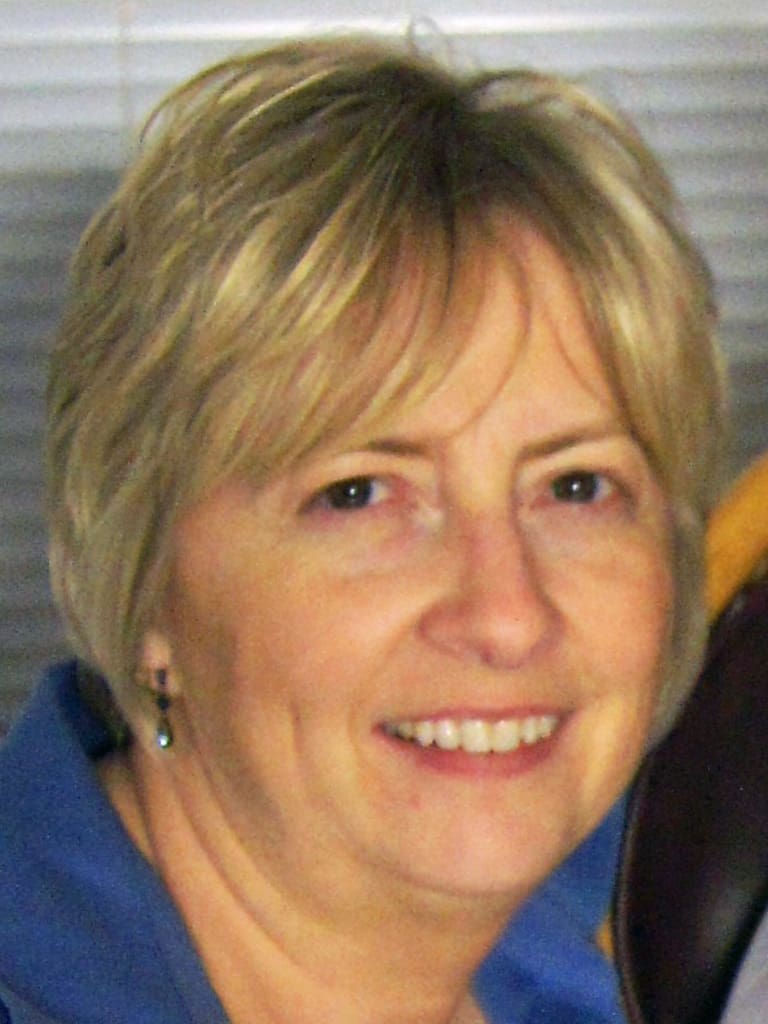
By: Marlene Oxender
I remember something my dad told me about apples. He said it wasn’t a big deal if I found a worm in my apple. But finding half a worm – that’s a different story. He made me think.
Dad was born in 1919, and I feel I didn’t pay enough attention when he talked about his growing-up years. I do know he helped his mother in the kitchen, and his brothers called him “Mary,” a nickname that didn’t follow him into adulthood.
My dad was one of ten boys growing up in the same home. And he had two sisters. Grandma was making meals for twelve children. Dad told me they cooked on a large cast iron griddle, and they made many pancakes in their farm kitchen.
I wish I would have spoken with my dad’s sister, Aunt Loie, so she could have told me stories of what it was like in their kitchen as she was growing up. Inexpensive meals that included pancakes, oatmeal, and beans were likely served fairly often.
Even if Grandma had kept a journal, she likely wouldn’t have written down things like how many pancakes she’d made in one day. I wonder how large their dining room table was. And were there enough chairs for everyone to sit together?
Farm boys have big appetites, and I’d say they’d eat at least four pancakes at each sitting. If ten people were being served, that’s 40 pancakes per meal. Served maybe four times per week means 160 pancakes per week.
At the end of the year, that’d be 8,320 pancakes. What kind of lifetime numbers are we looking at?
We really should think about these things. If she prepared meals for twelve people, three times a day, in just one year, that’s 13,140 meals. And she lived to be 87 years old.
My dad spoke openly about living through the Depression years. He used to tell people that his family was so poor, they ate their cereal with a fork so the leftover milk in the bowl could be passed on to the next kid.
Dad was one of those people who would tell a joke and then laugh at his own joke. He was fun to be around.
Knowing how poor my dad’s family was, there was an element of truth to saving the milk for the next kid.
Dad and his brothers were known for their gardening skills. They even knew how to grow popcorn, and we referred to the kernels as the “big white” or “little yellow.”
On Sundays when we were spending time with cousins, Dad knew he would be given the job of making the sugar corn on the stovetop because he was able to pop it without burning it.
In one of our black-and-white family photos, my siblings were apparently members of a band. Thankfully my parents didn’t skip taking a photo on that day.
My oldest sister Marcia was the director. Ed was a soldier. Jayne has a baton. Elaine is playing a guitar. Carolyn got stuck holding an umbrella. Don is the drummer.
I can just see my mother looking around for something for the littlest girl to hold before the picture was taken.
Don’s drum is a Campfire Marshmallows tin that now sells in the antique stores for over $100.
At the end of our lives, we really do put thought into things like how many sunrises a person was around for. How many beautiful moons they witnessed.
How many change of seasons they lived through. We can wonder how many gifts they’d received – some of them actually wrapped.
How many apples did Grandma peel? Were there fruit trees on their property? How many pints of peaches did she can? How many fruit cobblers and pies did she bake?
When my dad’s family got together on Sundays, they often spoke of their childhood. Even Grandma was known to have said she doesn’t know how she raised so many boys.

Like many women from her generation, she spent the majority of her day working inside the home as well as outside.
Did Grandma ever ask herself how many pancakes she’d likely made on her cast iron griddle? After she stirred the batter, her moments were decided for her.
Every pancake took a moment to pour. A moment for the bubbles to appear. A moment to flip them over. A moment to dish them up.
No matter how we spend our moments – whether we are the director, the soldier, the baton twirler, the guitar player, or the guy with the drum – we can look around and see someone gets stuck holding the umbrella. But if we live our moments with joy, we know that making the pancakes and holding the umbrella are important jobs.
My family has a copy of Grandma Kimpel’s pie crust recipe as well as her pancake batter. Both recipes are tried and true, but my dad’s sugar corn recipe isn’t as common.

Since kettle corn season is upon us, I’ll leave you with Grandpa’s Sugar Corn recipe.
1/2 cup popcorn kernels
2 heaping Tablespoons sugar
1/8 cup cooking oil (I use organic liquid coconut oil)
Measure approximately ½ cup popcorn into a 1-cup measuring cup. Sprinkle the sugar onto the popcorn.
Pour cooking oil in stovetop pan along with 2 or 3 popcorn kernels. Heat oil on stovetop until kernels pop.
Pour the measured popcorn and sugar in the heated oil. Put lid on pan and shake pan back and forth overheat until the batch is popped.
I’ve found the only way I can make a batch of sugar corn without burning it is with the Whirley Pop popcorn maker – an item you may find at your local hardware store.
The hand crank on the popper keeps the corn and sugar stirred while it’s popping. I buy the sugar and “little yellow” popcorn kernels at Divine Living in Pulaski, Ohio. They’re open for retail business on Fridays.
———————–
Marlene Oxender is a writer, speaker, and author. She writes about growing up in the small town of Edgerton, her ten siblings, the memorabilia in her parents’ estate, and her younger brother, Stevie Kimpel, who was born with Down syndrome. Her two recently published books, Picket Fences and Stevie, are available on Amazon.




